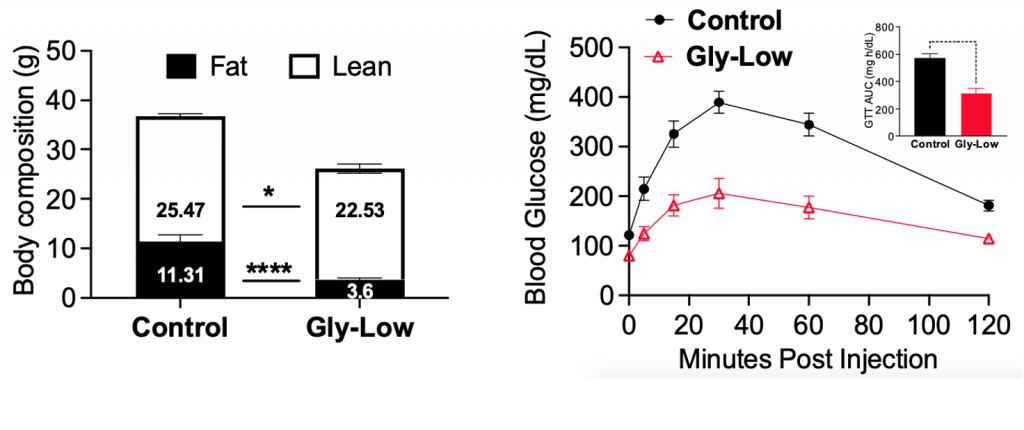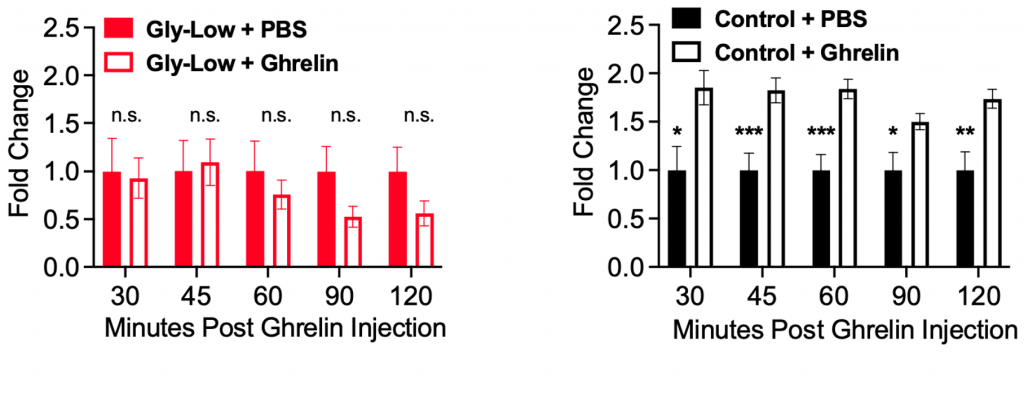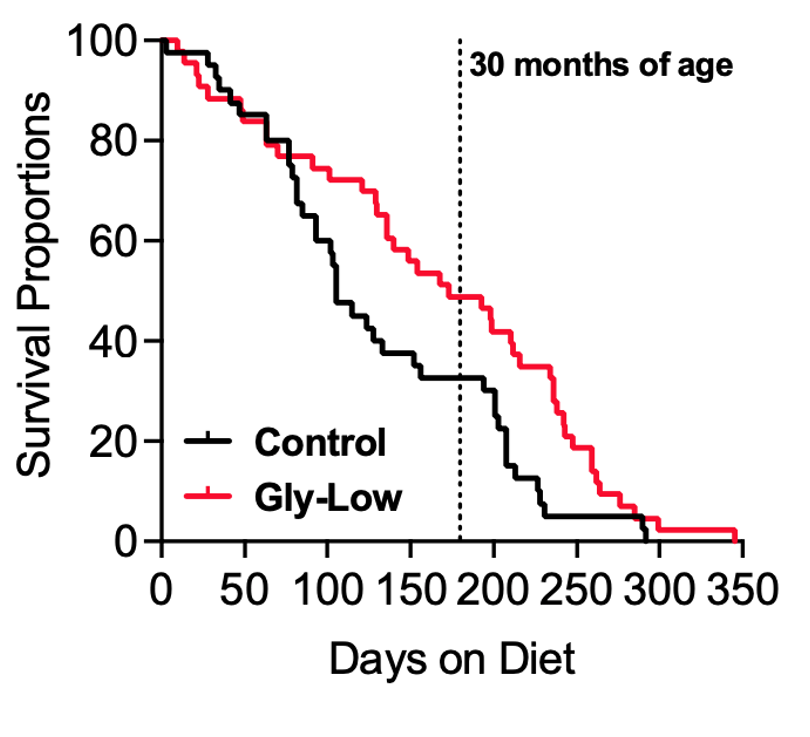Key Points:
- A combo therapy lowers blood glucose, increases insulin sensitivity and reduces body fat while largely preserving lean mass in mice.
- Appetite and food consumption are decreased by the combo therapy.
- Median lifespan increases by 8.25% after mice are given the combo therapy late in life.
Sugar indulgence is, in part, responsible for the obesity epidemic. Obesity increases the risk of several diseases, including dementia, cardiovascular diseases, and some cancers. Despite this, many of us find it difficult to escape the delightful pleasure of sugar-containing foods, and obesity is still on the rise. Now, scientists from the Buck Institute for Research on Aging may have found a way to relieve our cravings.
As reported on the preprint server for biology, bioRxiv, Wilmer and colleagues test the effects of reducing the harmful cellular consequences of sugar consumption by using a combination treatment that lowers a harmful molecule called methylglyoxal. The combo treatment, deemed Gly-Low, is shown to lower blood glucose levels, increase insulin sensitivity, and improve the body composition of mice. These results are attributed to reduced appetite and food intake. Furthermore, aged mice fed the treatment live longer than those on a normal diet.
Combo Therapy Improves Metabolism, Reduces Appetite, and Prolongs Lifespan
The researchers used compounds previously reported to reduce methylglyoxal: alpha lipoic acid, nicotinamide (B3), piperine, pyridoxamine (B6), and thiamine (B1). Termed Gly-Low, the combo treatment was shown to synergistically protect against methylglyoxal toxicity. Mice supplemented with Gly-low had lower body weights, primarily due to reduced fat mass. The mice also had lower blood glucose levels, which decreased more than average in response to insulin, suggesting improved insulin sensitivity.

The mice treated with Gly-Low ate less food, which is likely why they had improved metabolism and body composition. To investigate the effects of Gly-Low on hunger, Wimer and colleagues injected the mice with ghrelin, known as the hunger hormone because it increases the desire to eat. While normal mice increased their food intake after ghrelin injections, Gly-Low treated mice did not, suggesting that Gly-Low decreases appetite.

To explore the late-life benefits of decreased hunger signaling and reduced calorie intake, Wimer and colleagues treated 24-month-old mice (equivalent to about 70 human years) with Gly-Low. Treated mice had a 8.25% increase in median lifespan and 5.23% increase in maximum lifespan. Furthermore, the genes activated in the brains of the Gly-Low aged mice were closer to that of young (equivalent to about 23 human years) mice. These genes were measured from the hypothalamus — the brain region that regulates hunger.

Over-consumption of food, especially sugary foods, contributes to chronically elevated blood glucose (hyperglycemia) and enhanced sugar metabolism (glycolysis), which leads to the production of reactive molecules like methylglyoxal. Methylglyoxal reacts with other molecules to form what are called advanced glycation end-products (AGEs). AGEs compromise protein function and contribute to the pathogenesis of several diseases. Thus, detoxifying methylglyoxal with Gly-Low prevents the formation of AGEs.
How to Lower Glycation End Products (AGEs) for Longevity
Since the formation of AGEs contributes to the pathogenesis of diseases, it seems that lowering AGEs could contribute to increasing lifespan by reducing the occurrence of deadly diseases. A clinical study has shown that a therapy designed to lower methylglyoxal decreased blood glucose, increased insulin sensitivity, and slowed signs of vascular aging in obese adults. This therapy included hesperetin, which has been shown to increase the lifespan of mice while reversing muscle and cardiac aging. These studies suggest that reducing AGEs formation could reduce signs of aging, which may prolong lifespan.
Research on how to reduce AGEs formation is ongoing. Still, the studies mentioned above would suggest that AGEs can be reduced by consuming specific compounds, including B vitamins. AGEs are also found in foods and may contribute to obesity. A recent clinical study showed that a low-fat plant-based diet containing less AGEs led to weight loss in overweight individuals. This means that changing one’s diet could reduce AGEs, including reducing sugar intake by limiting the consumption of foods that contain high amounts of sugar or refined carbohydrates.